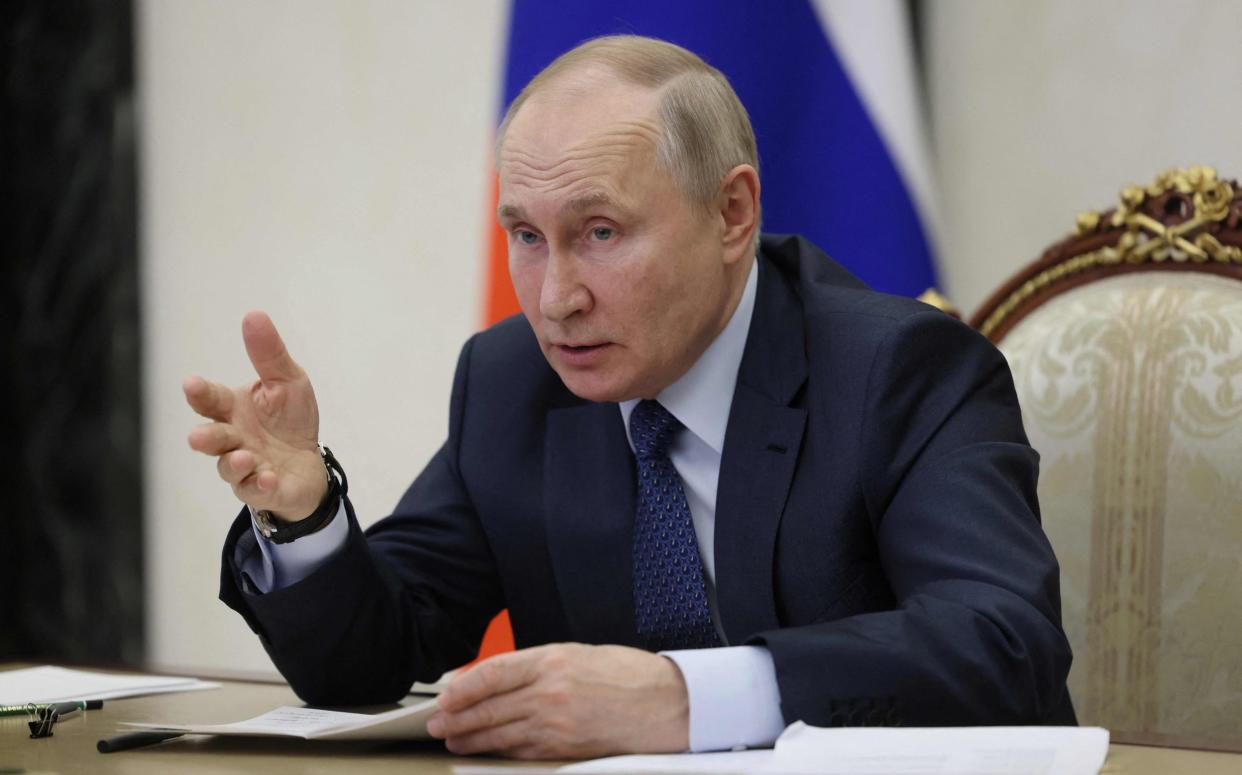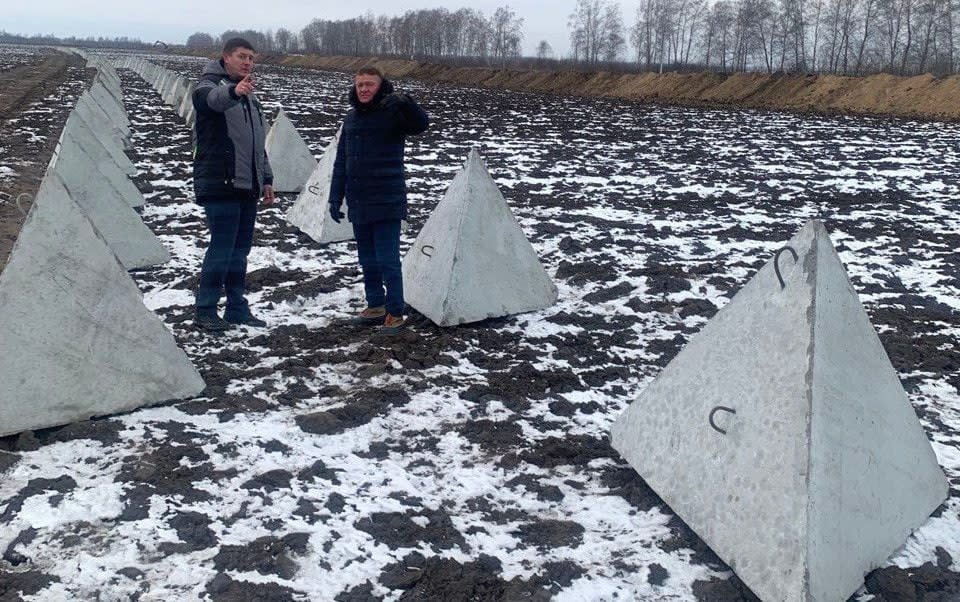'We haven’t gone mad': Putin backpedals on his nuclear threats

- Oops!Something went wrong.Please try again later.
Vladimir Putin has said his war in Ukraine could last a long time but rowed back on previous threats to use nuclear weapons to win it.
In his most extensive televised remarks about the invasion for some weeks, he said Russia’s nuclear deterrent was intended only for retaliation against a first strike and appeared to rule out using them in a battlefield role.
“We haven’t gone mad, we realise what nuclear weapons are,” Mr Putin said. “We have these means in more advanced and modern form than any other nuclear country... But we aren’t about to run around the world brandishing this weapon like a razor.”
“As for the duration of the special military operation, well, of course, this can be a long process,” he said of the length of the war. He also praised Russia’s “gains”, saying the Azov Sea had become an “internal” Russian water and likening it to Peter the Great’s conquests.
In September, Mr Putin claimed the United States set a “precedent” for nuclear use by bombing Japan in 1945 and put his nuclear forces on high alert. The implicit threat drew condemnation both from the West and Russia’s close ally China.
His comments about a long war come as Russia expands semi-permanent defensive fortifications on the border following a series of successful Ukrainian strikes on airfields.
On Tuesday, Vyacheslav Gladkov, the governor of the Belgorod region, announced the formation of “territorial defence battalions” to defend the area and posted pictures of new earthworks and concrete dragons’ teeth tank traps on his social media channels.
He said the battalions would be a Home Guard-style force raised from volunteers unable to serve in the regular military because of their health or age and implied they would only be deployed to defend the border, not to fight in Ukraine.
Rumours have circulated on Russian social media about a fresh wave of mobilisation in January and February.
Mr Putin said there was no military need to draft more soldiers at the current time. He said half of the 300,000 men called up under the “partial mobilisation” were serving in the war zone.
Roman Starovoyt, the governor of the neighbouring Kursk region, was also photographed inspecting defensive earthworks along the border.
Trenches have been dug on the Belgorod side of the border at least since April. Mr Gladkov announced the construction of a more substantial “Belgorod line” of defence in October and has posted images of the progress over the past month.

Britain’s ministry of defence said in an intelligence update that these new trenches “are probably more elaborate systems, designed to rebuff mechanised assault”.
“There is a realistic possibility that the Russian authorities are promoting defensive preparations within internationally recognised Russian territory to burnish patriotic feeling,” it said.
“However, it probably illustrates some Russia decision-makers’ genuine (but false) belief that there is a credible threat of invasion by Ukrainian forces.”
Belgorod, a city of 370,000, sits opposite the Ukrainian city of Kharkiv on Russia’s southwestern border.
The frontier between them has become a frontline with regular back-and-forth shelling since Ukraine liberated the Kharkiv region in September.
Right-wing Russian propagandists have warned border cities including Belgorod and Kursk have been left vulnerable to Ukrainian attack since the early months of the war.
Ukrainian forces so far have not attempted to launch serious offensive operations across the border, but they have run drone, helicopter and likely special forces raids into Russian territory several times.
They include a daring cross-border helicopter raid on a fuel depot in Belgorod in April, a blast on the Kerch bridge between Russia and Crimea in October, and attacks on two military air bases near Saratov and Ryazan on Monday.
The latter were probably the deepest raids into Russian territory since the war began. On Tuesday, two more drone strikes were reported in Kursk and Bryansk regions, which also border Ukraine.
The United States and other Western allies have sought to distance themselves from such incidents out of fear of escalating the war into a direct Russia-Nato conflict.
“We have neither encouraged nor enabled the Ukrainians to strike inside of Russia,” Antony Blinken, US Secretary of State, told reporters on Tuesday when asked about the Ryazan and Saratov raids.
Joe Biden’s administration is also believed to have asked Ukraine not to use US-provided weapons like HIMARS missile launchers for its cross-border operations.
However, US officials have also noted that Washington does not consider Crimea Russian territory, leaving open the possibility of strikes there.
The Wall Street Journal last week reported HIMARs vehicles provided to Ukraine had been modified to prevent them from using 190-mile range ATACMS missiles.
The launchers currently use the GMLRS rockets with a range of over 40 miles.

